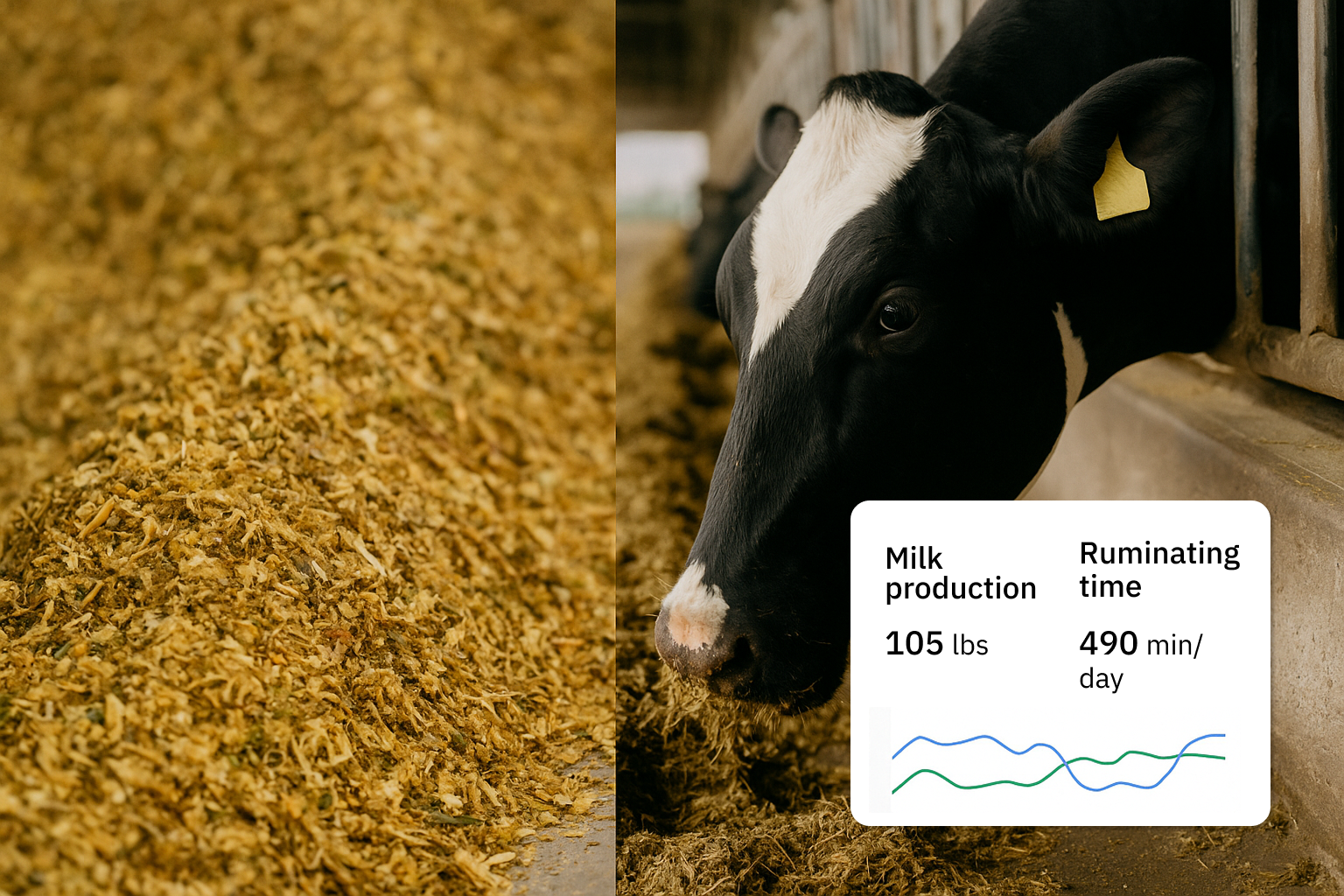Optimize operations to manage heat stress on your dairy farm
Rising temperatures can take a toll on your herd, impacting milk production, fertility, and overall health. With the right preparation and data-driven insights, you can benchmark performance, spot early signs of heat stress, and take proactive steps to keep your farm productive all summer long.
Summertime and high temperatures aren’t all fun and games. For dairy farmers and their cows, it can make life uncomfortable. High temperatures can lead to heat stress, a condition that causes a reduction in milk production, health and fertility issues.
Investments to mitigate heat stress take time and money, making it crucial to evaluate performance now and plan accordingly before the summer season arrives.
How heat stress affects dairy cows
Cows struggle to regulate their body temperature when the temperature humidity index (THI) exceeds 68. When this happens, they eat less and stand more, leading to reduced milk yield and hoof problems. And research shows that milk production can drop by 10-25% during prolonged heat stress. In addition to that you see a drop in milk fat and protein - the quality of milk declines, affecting its price.

Given these risks, planning ahead and managing environmental factors is essential to maintaining cow health and productivity. Taking action early can help prevent bigger issues down the line.
How data can help you manage heat stress
Some decrease in components like milk fat or protein is expected with summer heat stress, but how much is too much? Knowing what’s normal and what signals a problem is key to taking timely action.
Connecterra’s heat stress benchmarking insights help you understand the impact of heat stress on your farm. By analyzing production data and THI data year-round and comparing it to other farms, you can see how your herd measures up. This includes looking back at the performance of the previous year to spot trends and identify whether your declines are within a typical range or need intervention.

For example, one farm might see a 5% drop in milk fat during heat stress, while another experiences a 15% decline. These benchmarks reveal if your herd’s performance is below expectations and highlight areas like somatic cell count levels or milk components that need attention.
By knowing how your farm’s performance measures up, you can better prioritize interventions. You can make targeted adjustments to reduce the effects of heat stress and protect your herd’s well-being.
Preparing your farm for summer
Before summer arrives, there are also some proactive steps you can take early in the year. Here are three key areas you can focus on.
Barn infrastructure
Your cows need a cool, comfortable environment to stay productive:
- Cooling systems: Check and maintain fans and misters to ensure they’re in good working condition. Consider upgrades if your current setup isn’t keeping up.
- Ventilation: Optimize airflow in barns by adding fans or making layout adjustments to minimize heat buildup.
- Shade: Ensure outdoor spaces include shaded areas to give cows relief from direct sunlight.
Feed quality
Heat and humidity can quickly spoil feed, impacting cow health:
- Roughage storage: Good bunker and face management is essential to reduce feed waste. Protect it by minimizing exposure to the elements and size your bunkers appropriately to ensure sufficient daily feed use while preventing spoilage.
- Preservation additives: Use silage additives to protect feed quality and extend its stability.
- Regular checks: Monitor feed for signs of heating or mold, addressing issues promptly.
Data-driven decisions
Using data can help you make smarter, more effective changes:
- Review past trends: Analyze your farm’s historical data to understand how previous summers impacted performance.
- Benchmark performance: Compare your outcomes to industry standards with tools like Connecterra’s insights.
- Plan interventions: Focus on strategies informed by your data, such as modifying feeding schedules or enhancing barn cooling systems.
Make better decisions with benchmarking insights
Farmers who understand whether heat stress is affecting their herd are better positioned to take action and protect their farm's productivity. Using Connecterra’s benchmarking insights, you can compare your farm’s performance to other dairy farms during high-THI periods. Thus giving you a clearer view of how heat stress may impact factors like milk fat percentage.
For example, if benchmarking shows a significant drop in milk fat during high-THI periods compared to industry averages, this highlights that action is needed.
Connecterra’s insights help you identify specific patterns, so you can prioritize adjustments like optimizing cooling systems or adjusting feed strategies where they will have the most impact.
Keeping your farm productive through the summer heat
Heat stress is a challenge every dairy farmer faces. But it doesn’t have to come at the cost of your herd’s well-being or your farm’s productivity.
Early preparation, from improving infrastructure to ensuring feed quality, can make all the difference. Combine the above steps with data-driven insights, like those from Connecterra, to take proactive measures that keep your farm thriving, even in the hottest months.




